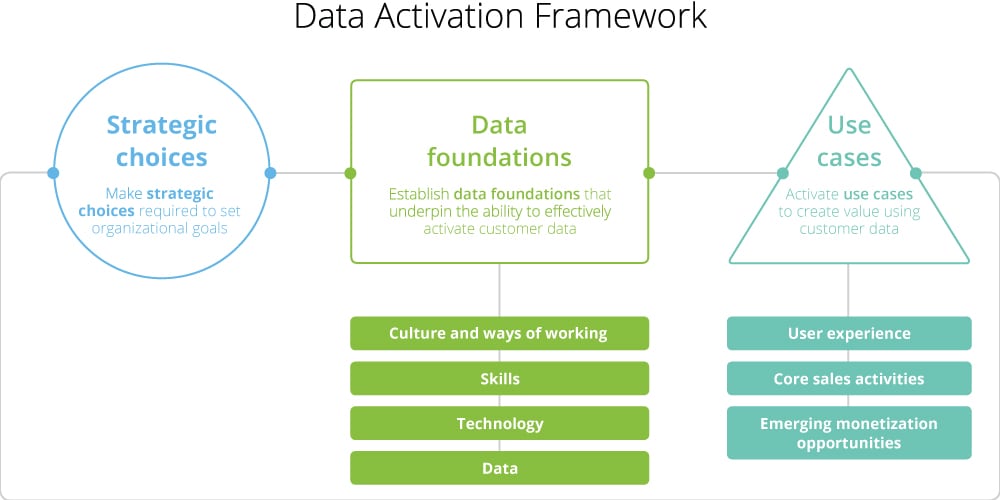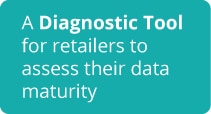Digital transformation through data has been saved

Perspectives
Digital transformation through data
How retailers are delivering more value with insights
Deloitte conducted a global data transformation study to understand how retailers are leveraging customer data to drive revenue.
Introduction
Digital innovation is revolutionizing the traditional retail model. In addition to e-commerce, digital interactions influence more than half of every dollar spent in brick-and-mortar stores and drive expectations of price transparency, convenience, and relevance.1 Such compounding trends intensify the urgency for retailers to act. Those who successfully manage the digital shift do so, in part, by using online customer data to enhance their core retail activities and develop new sources of media revenue. These digital touchpoints allow retailers to understand customer behavior in ways that were never possible in an exclusively brick-and-mortar world. Retailers who use customer data to transform themselves are better positioned to thrive in the new digital retail landscape and create sustainable growth.
How much value can retailers drive with this data, and how do they do it? Deloitte conducted a study to better understand how retailers are leveraging customer data to increase engagement on their digital platforms and drive value through the monetization of those platforms. To narrow focus and reveal opportunities for retailers on their digital platforms, the study excludes customer acquisition and exclusively offline activities.
Setting the stage
Customer data is at the center of online retail.1 Retailers are driven by customers, suppliers, and now advertisers to become more data-informed. Customers expect to be recognized, served relevant products, and presented with offers that satisfy their individual needs. Suppliers and advertisers want to effectively influence customers during the critical moments before purchase.
E-commerce websites are media assets that can connect brands directly with customers in a transactional mindset. While retailers are seizing this opportunity to create more value with suppliers and brands, a superior customer experience remains the big prize. At the center of these efforts is a common goal: to translate an understanding of customers’ behavior into a competitive advantage in the online retail industry.
Retailers are diverse, but data is a priority across the globe. While data is universal, there are regional nuances that affect how retailers approach digital transformation in the United States, EMEA, and APAC. For instance, the UK is considered a global leader in omnichannel retail, including online channels, but in other parts of Europe, not all omnichannel players have the same urgency to transition online. In APAC, China leads the way in e-commerce market maturity, including payment and fulfillment innovations, while in Indonesia, the focus is on capturing new customers from increasing Internet connectivity and smartphone adoption. In the United States, the retail market is thriving; in fact, the United States is home to seven of the 10 largest retailers in the world.2 Still, the United States is facing some market turmoil as the rise of digitally native brands has shifted competitive dynamics in the e-commerce retail landscape.
Despite the variability across regions, customer data is used by retailers around the world to better serve and communicate with customers. This global emphasis on data is leading to tighter data privacy regulations, such as the European Union’s General Data Protection Regulation (GDPR). Although the long-term impact of GDPR and other impending regulations is unknown, the intent of the regulations is to protect consumers. Retailers who prioritize data governance and compliance with these new regulations and engage in public policy development are positioning themselves to thrive.

How retailers are creating value through customer data
Retailers collect, transform, and activate customer data to drive value across three primary operational objectives:
- Improve the user experience
- Enhance core sales activities
- Engage in emerging monetization opportunities
Each of these operational objectives is defined by a set of use cases:

User experience
The digital consumer has higher expectations for ease and relevance of each step of the purchasing journey. Retailers focus heavily on the user experience because it is central to a great overall customer experience. User browsing and transaction data can be translated into actions designed to tailor the customer journey and user interface, which can significantly improve the user experience and drive value.

Core sales activities
Customer data enables a number of critical capabilities that enhance a retailer’s ability to sell products and better serve customers. Data can be used to understand customers’ historical purchase behavior, browsing activity, and potential loyalty. Retailers can then use this data to optimize their product catalog to match their customers’ purchasing behavior, enhance their promotional campaigns to target customers with the right offer based on their browsing activity, and improve their loyalty program to identify and serve high-value customers. In fact, retailers adept at using data in their core sales activities drive higher conversion rates, basket size, and purchase frequency than their low data maturity counterparts.

Emerging monetization opportunities
An increasing number of retailers are diversifying into media businesses, pursuing higher margin revenue streams and offering innovative new shopping experiences. Likewise, given their proximity to the point of sale, suppliers are using digital sponsorships and promotions to inform purchasing decisions. Data also enables retailers to monetize their digital media assets and online to offline support, to serve the over 90 percent of online customers who abandon the online customer journey before making any transactions. While this may represent a relatively small percentage of revenue for some retailers today, others have invested heavily into these emerging opportunities and are seeing the benefits.

Thinking about digital transformation...
Improving data maturity was a strategic priority for all of the retailers who participated in the study, but the road to transformation requires a clear direction and deliberate choices about where to focus. The Data Activation Framework sets out three critical stages for digital transformation, and the accompanying Data Activation Guide details actionable steps retailers can take across these stages to increase their data maturity:

Charting the path forward
Digital transformation is not a straightforward journey, but a handful of retailers are charting an effective path forward. With their data foundations in place and a clear strategic direction and ambition for data, they are able to execute more sophisticated use cases and deliver market-leading online experiences.
These best-in-class companies have translated an understanding of their customers’ behavior into a competitive advantage, using data to increase customer revenue as well as drive supplier and advertiser revenue. There are clear rewards for retailers who are willing to learn from these examples-and to act quickly.
About the study
As part of this study, Deloitte held interviews with more than 60 retailers and e-commerce experts in the United States; Asia Pacific (APAC); and Europe, the Middle East, and Africa (EMEA). Study participants came from a diverse range of retail backgrounds and varied by:

Endnotes
1In this study, customer data is defined as first-, second-, and third-party data collected on customer characteristics (such as location and demographic), customer behavior on their own sites (such as product views, add to basket, and bounce rate) and transaction history.
2“Deloitte Global Powers of Retailing,” 2018.


